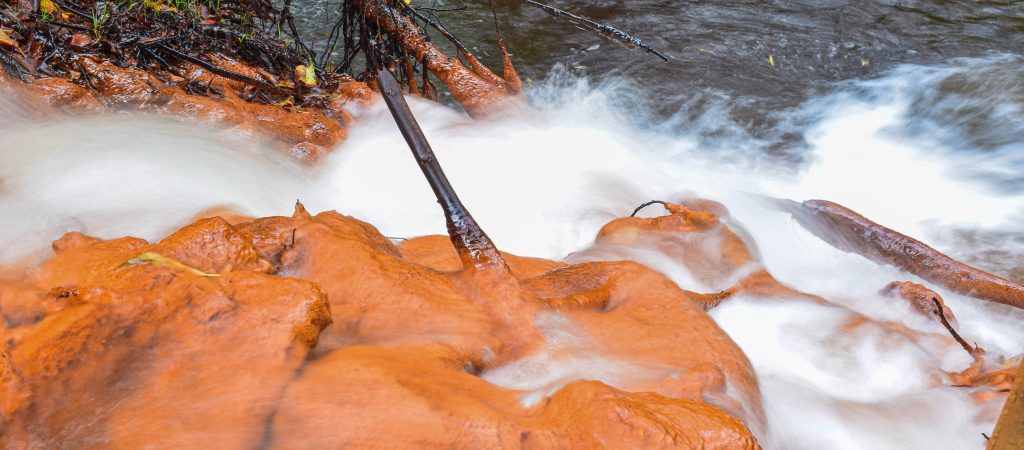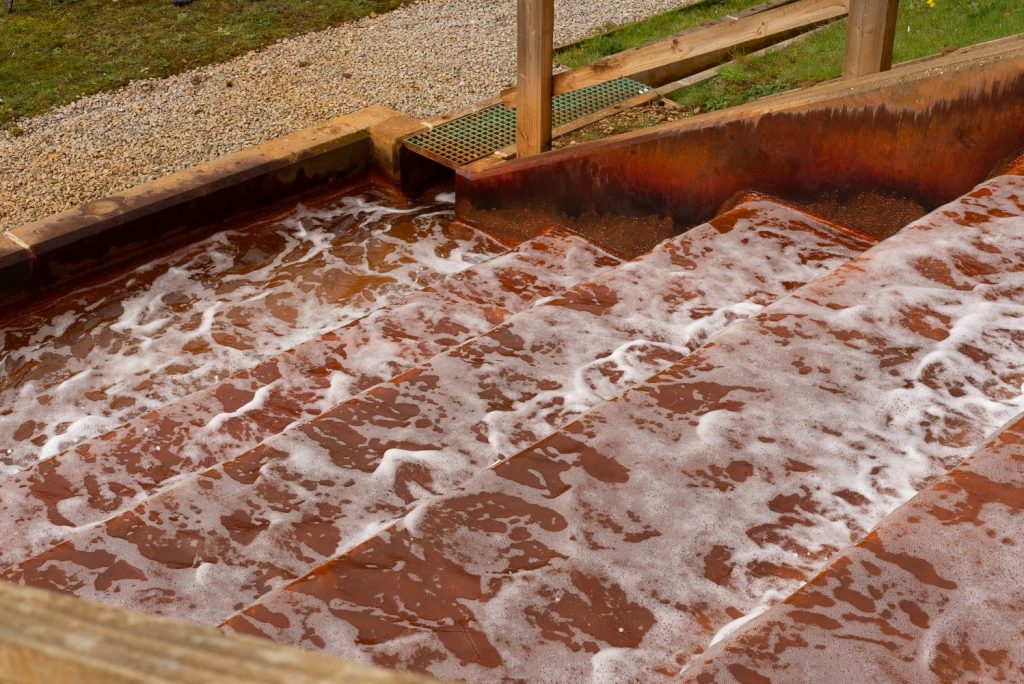
What’s the problem?
The larger coalfield is broken down into areas that are linked by underground workings which are referred to as ‘blocks’. The mine water within this block has been steadily rising since the pumps were switched off during the late 1980’s. As the water rises, metals and minerals from the mine workings flush into the mine water. If left uncontrolled, the rising mine water could affect aquifers (sources of drinking water) and lead to discharges to streams and rivers within the area.
Iron is the main substance within the mine water that can affect watercourses. This comes from the rocks within the workings. Although not toxic, if this gets into streams and rivers this can build up on the bed of the watercourse and impact small insects and fish, which in turn can affect larger species which feed on these. There is also a visual impact through the orange staining of the water from the iron.

Iron-stained mine water that has risen to the surface and entering the local watercourse in Dalkeith, Scotland.
Similarly, if the mine water gets into underground aquifers, this could create a severe impact on the water quality, resulting in this resource becoming unusable.
Typically, mine water within shallower workings, as with the water from Thorpe Hesley, contain lower amounts or minerals. As you head further to the south towards the River Don the workings get deeper and levels of minerals within the mine water increase.

Orange staining from the dissolved iron clinging to the cascade steps during the first phase of treatment.